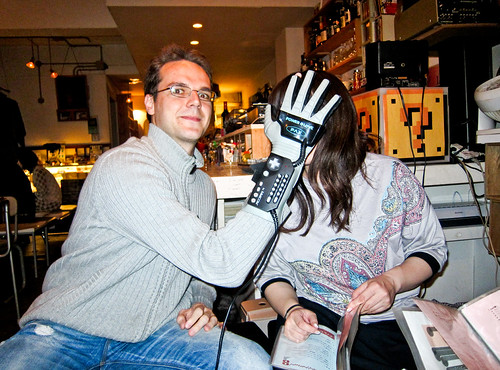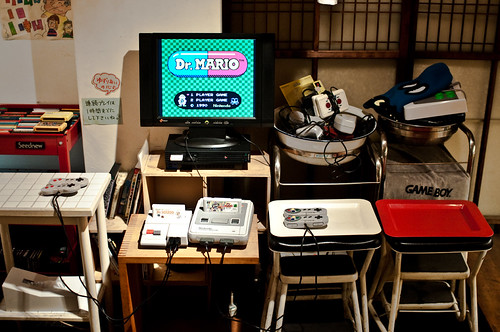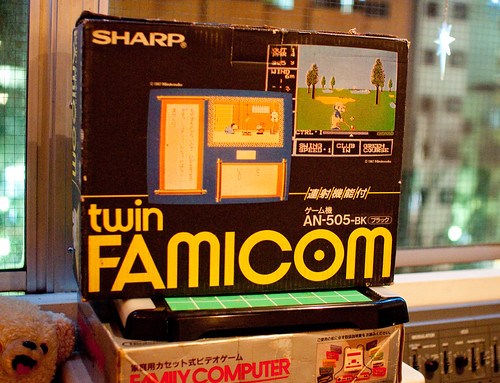During the second part of the XXth century, electronics based in silicon conquered the world: calculators, computers, music players, cellphones, etc. Japan and United States were undoubtedly the leaders of this revolution. For many years, companies like Intel in United States or Sony in Japan are seeing closer and closer the physical limits at the time of miniaturizing electronics based on silicon. Experts say we will reach the limit at the end of next decade. In that moment we will need to change the paradigm or we will be technologically stuck.
Japan saw the limits of the current semiconductor technology based on silicon and got down to work before anyone else. In 1974, Norio Taniguchi proposed for the first time the word “Nanotechnology” to include all disciplines dedicated to the investigation and research of applications in the world of the very small, in the world where working with nanometers is the normal thing.

The development of nanobots is one of the most promising fields inside the nanotechnology world.
During the 80’s several Japanese companies began to produce and sell scanning probe microscopes, making possible the cheap observation of structures with nanometric dimensions. The proliferation and improvement of this measuring instruments was the first step; the second big step was the first direct observation of carbon nanotubes in 1991 by Sumio Iijima. Carbon nanotubes allow the construction of structures as hard as the diamond and as flexible as rubber. More than fifteen years after the discovery of nanotubes, the bicycle that won the Tour de France in 2006 contained carbon nanotubes alloy with carbon fiber. Sumio Iijima won the Kavli Prize in Nanoscience and the Prince of Asturias Award for Technical Scientific Research in 2008. Sumio Iijima and the nanotubes were the initial spark; ten years later the joint investment by the government and big Japanese corporations in the research and development of nanotechnology reached 500 million euros (680 million dollars). United States and Europe reacted a little bit later, but today the investment destined to nanotechnology in United States, Asia and Europe surpasses the 1,000 million euros (1,350 million dollars) in each region.
Japan is still the leader because they were years ahead researching and developing nanotechnology applications, but countries like South Korea, Taiwan or China are starting to show leadership in the field and are fast at transfering technologies. In South Korea there are more than 300 products on sale in whose production was necessary to work in nanometric scale. For example, toothbrushes, washing machines or air conditioners that kill microbes using silver nanoparticles. One of the most popular products in South Korea are the refrigerators that are able to preserve products for a longer time also using technologies based on silver nanoparticles. Samsung has even registered the nanosilver trademark to use it in the commercialization of its washing machines and dishwashers.
The practical applications and the true revolution of nanotechnology is still to come. The applications are promising in very varied fields: food preservation, the killing of cancerous cells using nanobots, batteries that last longer, electronic devices that consume less, new energy sources, more efficient solar cells, textiles without wrinkles and able to repel liquids, unscratchable lenses, computer and electronic devices that are in general smaller and faster…
Japan is working practically in all of those areas where nanotechnology can find practical applications. However they are focusing more in trying to find what can be the next change of paradigm beyond the traditional technology based on silicon that can be massively produced in a cheap way.
A new miniaturization is awaiting us in which an electron will represent a bit of information; experts in the field foresee the mass fabrication of transistors of one electron at the end of this decade. Other field where a lot of money is being invested in Japan is the production of new medicines based on the artificial synthesis of molecules, and in a farther future even based on nanobots.
During the last 30 years the industries that have moved the world forward have been the computing and telecommunication industries, during the next decades the nanotechnology industry is going to most likely take the leading role as the impulse engine of disrupting technologies all over the world. Japan occupies the first position on the starting grid in the nanotechnology sector; United States is second, while Europe is in third position but is slowly waking up and the investment in nanotechnology research is growing sharply. As microprocessors have had applications that 30 years ago were impossible to imagine, during the next decades the advances in nanotechnology that today nobody has predicted will surely bring us many applications that will change our lives in the future.
Article originally published in the Spanish newspaper El País.
Other articles published in El País:

































